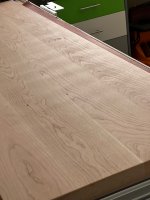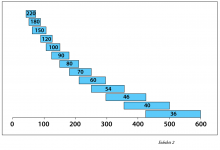prjones
Member
- Joined
- Apr 5, 2024
- Messages
- 30
I've heard folks talk about getting sanding "swirls" in their finishes over the years, but I've never experienced it until now. I glued up an 8/4 cherry panel and sanded through the grits 80-120-220 with ETS150 and Granat paper, extractor turned down low, and moving slow with the weight of the sander. It feels smooth to the touch, but when light is raked over the surface, there are definite swirl marks:
View attachment 1
View attachment 2
Any idea what could be causing it and the solution? Thanks!
View attachment 1
View attachment 2
Any idea what could be causing it and the solution? Thanks!



